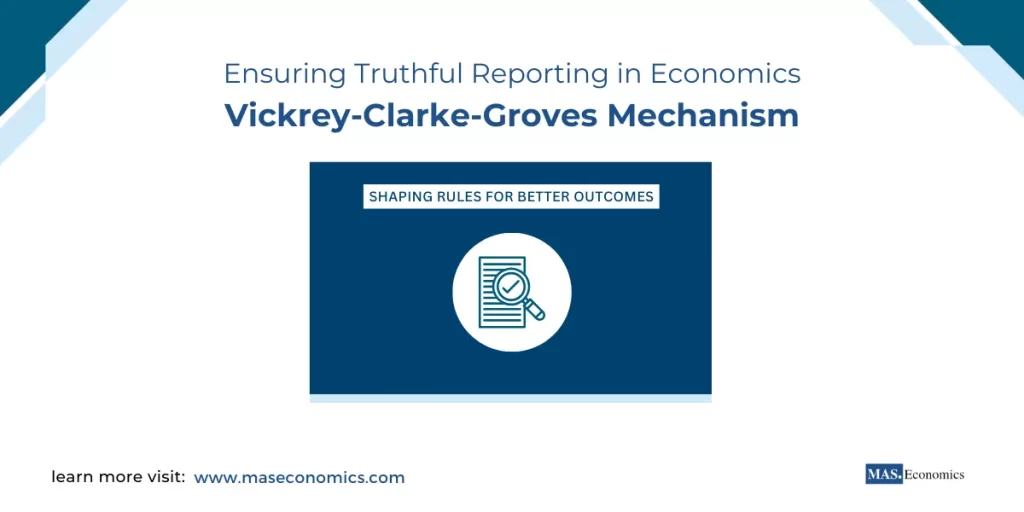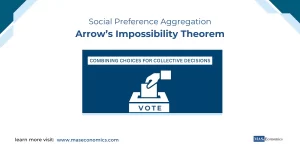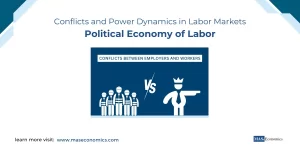Mechanism design in economics allows for structuring incentives to achieve specific outcomes. A notable mechanism for promoting truthful behavior is the Vickrey-Clarke-Groves (VCG) mechanism, valued for ensuring honest reporting in decision-making scenarios. The theoretical foundations of the Vickrey-Clarke-Groves mechanism, its role in promoting honesty, and its significance in mechanism design provide crucial insights into how effective economic systems can be structured.
What Is Mechanism Design?
Mechanism design is a field of economics that essentially works in reverse compared to traditional economic analysis. While standard economic models analyze the outcomes that result from certain individual behaviors within a given structure, mechanism design asks how we can set up the rules of the game so that individuals, acting in their self-interest, will produce a desirable outcome. It focuses on creating a system that aligns individual incentives with the collective good.
In mechanism design, the challenge is to ensure that individuals are encouraged to behave in ways that yield optimal social outcomes. A successful mechanism is often characterized by strategy-proofness—that is, it is designed in such a way that individuals do not have an incentive to misrepresent their true preferences.
Introducing the Vickrey-Clarke-Groves Mechanism
The Vickrey-Clarke-Groves mechanism is a type of direct mechanism in mechanism design, where participants are asked to report their valuations (or preferences) honestly. The VCG mechanism achieves strategy-proofness by creating incentives such that truthfully reporting valuations is the optimal strategy for each participant, regardless of what others do.
The VCG mechanism is named after three economists—William Vickrey, Edward Clarke, and Theodore Groves—each of whom contributed to its development. It is particularly useful in scenarios involving public projects or goods, where individuals’ preferences determine whether a collective action should be taken and how the associated costs should be shared.
Basic Structure of the VCG Mechanism
The VCG mechanism is generally used to decide whether a project should be undertaken or not based on the valuation profiles of the individuals involved. Here are the key features of the mechanism:
Individuals Report Valuations
Each participant is asked to report their valuation of the project. This valuation represents the maximum they are willing to pay for the project to be undertaken. Positive valuations indicate support for the project, while negative valuations indicate opposition.
Determining the Outcome
The project is carried out if the sum of all reported valuations is positive. This means that if the overall benefit to society outweighs the costs, the project proceeds.
Monetary Transfers
To ensure that individuals report their valuations truthfully, the VCG mechanism imposes monetary transfers, often referred to as penalties. The transfers are designed to align an individual’s private incentives with truthful reporting.
How the VCG Mechanism Works
Consider a community deciding on whether to undertake a public project, such as building a new park. Each community member has a different valuation for the park, representing how much they are willing to pay for its construction. Some members might value the park highly, while others may oppose it due to costs or other concerns.
Pivotal Reporting and Transfers
The VCG mechanism works by determining whether each individual’s report is pivotal—that is, whether their valuation changes the collective decision from “do not execute” to “execute” or vice versa. Let’s break down this idea:
If an individual’s report is pivotal and leads to the project being carried out, they are required to pay a penalty equal to the sum of the other participants’ reported valuations (if it was negative without their report). This ensures that each person bears some responsibility for causing the project to proceed if they value it enough.
On the other hand, if an individual’s report leads to the project not being carried out, they may also be subject to a penalty based on the effect of their report on the decision.
These penalties are crucial to ensuring that the participants truthfully report their valuations. By making individuals accountable for the impact of their reports, the VCG mechanism ensures that each person maximizes their utility by being honest.
Strategy-Proofness
A core feature of the VCG mechanism is its strategy-proof nature. This means that no individual can improve their outcome by misreporting their true valuation. In other words, the VCG mechanism incentivizes honesty. Here’s how:
Incentive Compatibility
The mechanism is designed such that reporting a valuation higher or lower than one’s true valuation does not lead to a better outcome. Any deviation from truthful reporting would either make the individual worse off or yield no additional benefit compared to truthful reporting.
Minimizing Manipulation
Since individuals do not benefit from providing misleading information, the VCG mechanism effectively minimizes opportunities for manipulation. This is particularly important in public projects, where misinformation could lead to inefficient outcomes or unfair cost allocations.
Real-World Applications of the VCG Mechanism
The VCG mechanism has many practical applications, particularly in scenarios involving public goods or resource allocation. Let’s look at a few examples:
Public Project Decisions
The classic example of a VCG mechanism in action is in deciding whether to undertake a public project, like building a community center or installing new infrastructure. Each community member reports their valuation, and the project is executed if the overall valuation is positive.
Auction Theory and Advertising
The VCG mechanism is widely used in auction theory, especially in second-price auctions and online advertising auctions. For instance, in online advertising, companies bid for ad slots. A modified version of the VCG mechanism helps allocate ad space based on bids, ensuring that advertisers pay a fair price and incentivizing them to bid their true value.
Spectrum Allocation
In telecommunications, governments use auctions to allocate radio frequencies to service providers. The VCG mechanism has been instrumental in ensuring that companies truthfully bid their valuations for the spectrum, leading to an efficient allocation of valuable resources.
Criticisms and Limitations of the VCG Mechanism
While the VCG mechanism is a powerful tool in mechanism design, it does have certain limitations that can diminish its appeal in real-world applications:
Complexity and Transparency
The calculations involved in determining the penalties and outcomes can be complex, making it challenging for participants to fully understand the mechanism. This lack of transparency can make it harder to convince individuals to participate, as they may not trust the outcome if they cannot easily verify it.
Negative Transfers
In some scenarios, the VCG mechanism requires individuals to make payments even if the project is not executed. For instance, a participant might be penalized for providing a negative valuation that prevents a beneficial project from proceeding. This requirement can be counterintuitive and may be seen as unfair.
Revenue Concerns
The mechanism does not always lead to a balanced budget, meaning that the total amount collected through transfers may not sum to zero. In some cases, the mechanism collects more than it needs, leading to excess funds that are not redistributed to participants.
The VCG Mechanism vs. Majority Rule
To understand the unique strengths of the VCG mechanism, it is helpful to compare it to majority rule:
Majority Rule
Under majority rule, the decision to carry out a project is based on whether a majority of participants support it. However, this approach ignores the intensity of preferences. If a small minority benefits significantly from the project, but the majority has only a slight disapproval, the majority rule might prevent the project, even if its total benefit is substantial.
VCG Mechanism
Unlike majority rule, the VCG mechanism takes into account the magnitude of each individual’s valuation. This means that the project is carried out if the total valuation is positive, reflecting both the number of supporters and the intensity of their preferences. This is why the VCG mechanism is often seen as a more efficient approach for public projects.
Conclusion
The Vickrey-Clarke-Groves mechanism is a cornerstone of mechanism design, offering a strategy-proof method to elicit truthful behavior. By aligning individual incentives with collective welfare, it ensures efficient outcomes in scenarios involving private information.
From public project decisions to auctions and resource allocation, the VCG mechanism demonstrates the potential of economic theory to foster truthfulness and efficiency. Despite its limitations, its role in mechanism design is invaluable, providing insights into structuring economic interactions for optimal outcomes.
FAQs:
What is the Vickrey-Clarke-Groves (VCG) mechanism?
The VCG mechanism is a strategy-proof method in mechanism design that incentivizes participants to truthfully report their valuations, ensuring efficient outcomes in decision-making scenarios like public projects or auctions.
How does the VCG mechanism ensure truthful reporting?
The VCG mechanism uses monetary transfers (penalties) to align individual incentives with honest behavior. Reporting false valuations either worsens an individual’s outcome or provides no benefit, making honesty the optimal strategy.
What is strategy-proofness in the VCG mechanism?
Strategy-proofness means participants cannot improve their outcomes by misrepresenting their valuations. This ensures that truthfully reporting preferences is always the best strategy.
When is the VCG mechanism used?
The VCG mechanism is commonly applied in public project decisions, auctions (like ad slots or spectrum allocation), and resource allocation problems where efficient and fair outcomes are required.
How does the VCG mechanism differ from majority rule?
Unlike majority rule, which only considers the number of supporters, the VCG mechanism accounts for the intensity of preferences. It executes a project if the total reported valuation is positive, reflecting both the number of supporters and the strength of their preferences.
What are the limitations of the VCG mechanism?
The VCG mechanism can be complex, making it hard for participants to fully understand. It may also require payments from individuals even when a project isn’t executed and doesn’t always balance collected transfers, which can lead to excess funds.
Why is the VCG mechanism important in economics?
The VCG mechanism demonstrates how economic theory can create systems where individual incentives align with collective welfare, promoting truthfulness and efficiency in decisions involving private information.
Thanks for reading! Share this with friends and spread the knowledge if you found it helpful.
Happy learning with MASEconomics




